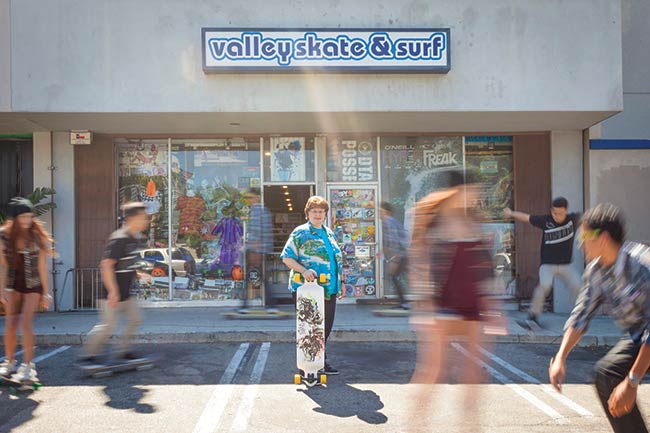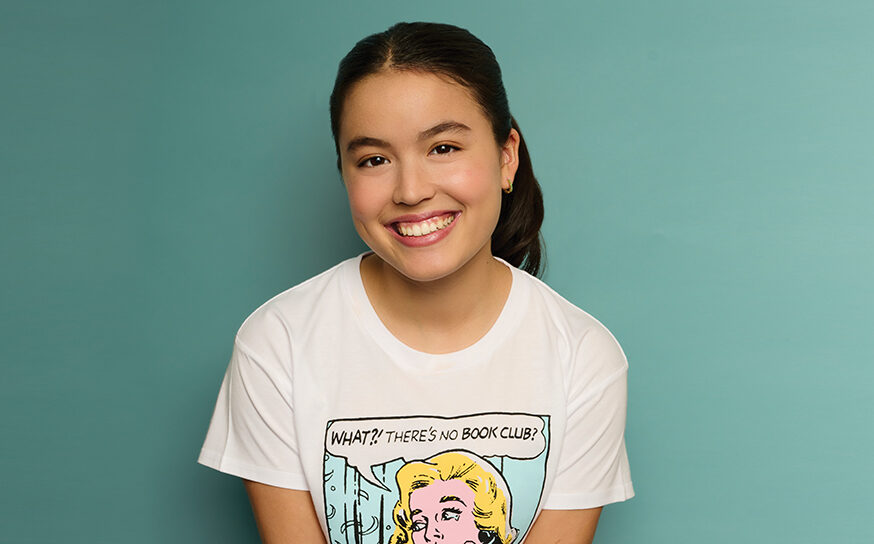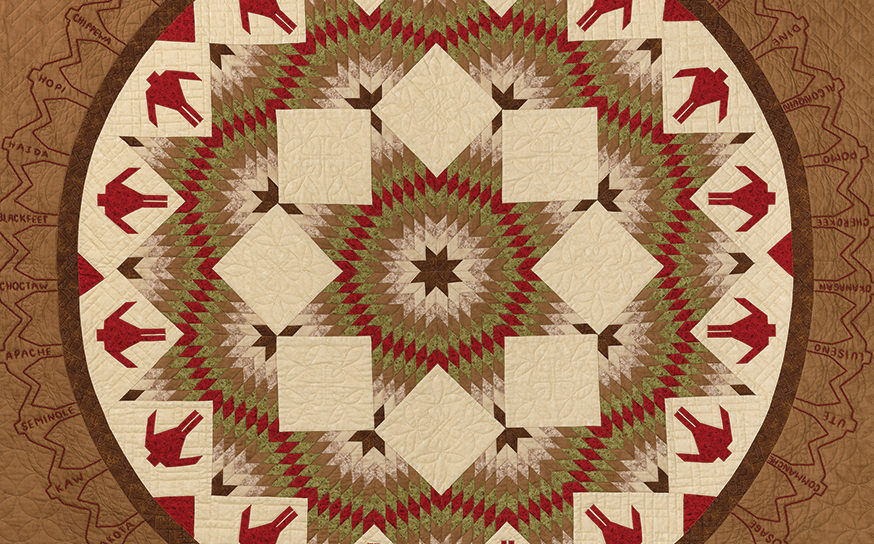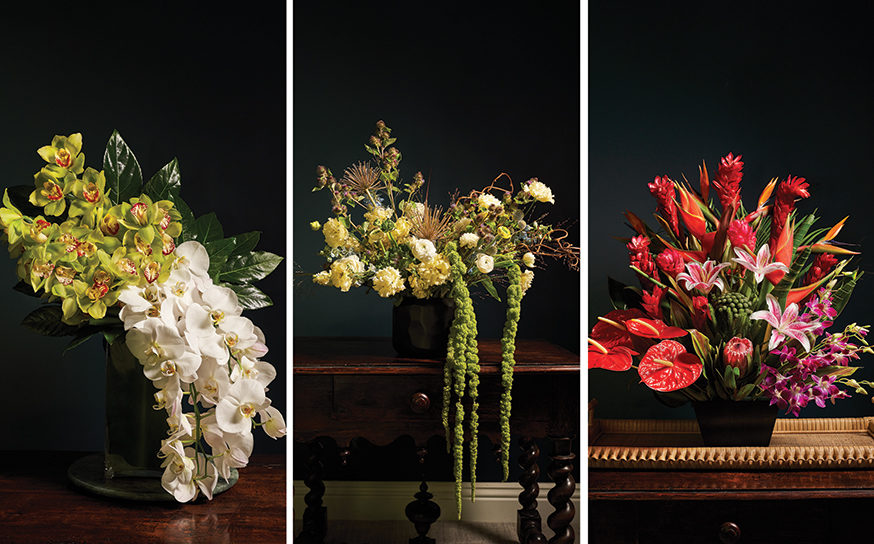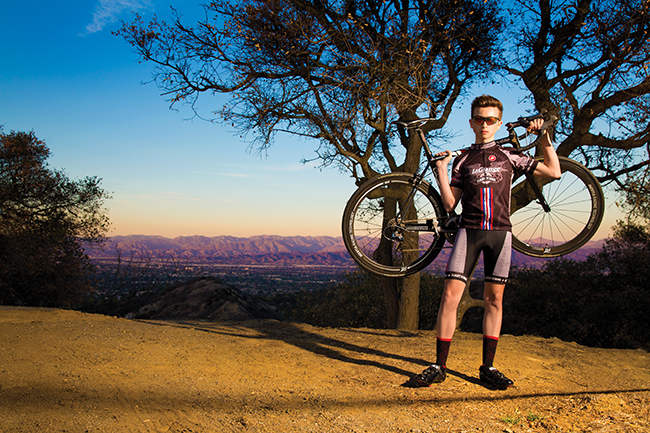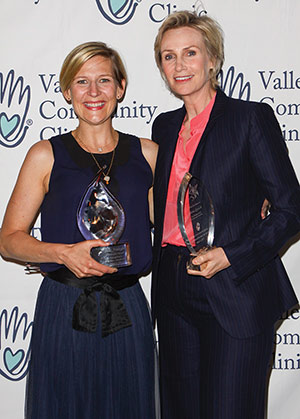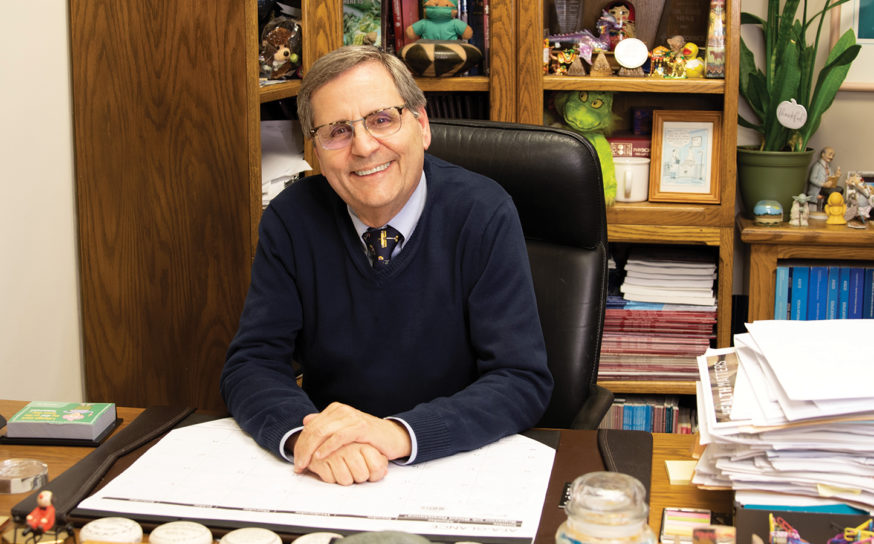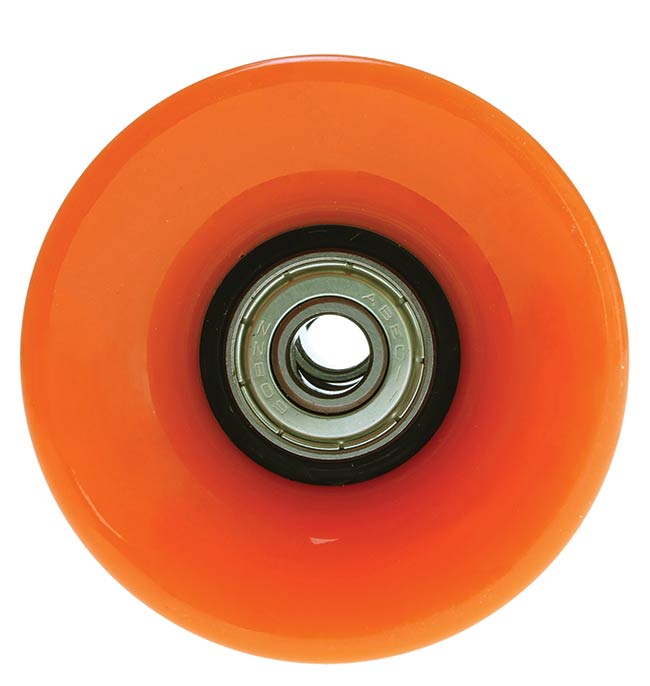
How we Roll
Take an awesome ride with the innovators, shapers and supporters behind the vibrant
Valley skateboard scene.
-
CategoryUncategorized
There isn’t an inch of empty space at Valley Skate and Surf in Northridge. The closet-sized shop is meticulously packed with a literal warehouse of skateboards, skate shoes, neon-colored skateboard wheels, clothes and roller skate gear—even the ceiling is covered in skate company posters, flags and advertisements.
“If you find the space, it’s a sin,” says Mona Fleschler. She and her daughter, Phyllis, are co-owners of the store, which was originally founded in 1976.
The mother-daughter team has been a part of the San Fernando Valley skate community for years—helping more than a few pros get their start. “My manager and one of my skateboard employees would go out in front and actually teach them their first ollie and kickflip,” says Phyllis.
She shares that local pro Paul Rodriguez, Jr. (Paul Rodriguez, Sr. is the well-known comedian), who has won six medals in the Skateboard Street competition at the X Games (including four that are gold), learned his first tricks just out front of Valley Skate and Surf.
In the ‘80s, the shop would hold skate demos in the parking lot. Sometimes they’d even roll out an old, beat-up car for skaters (like Rip Curl USA CEO Kelly Gibson in his pre-corporation days) to do aerial tricks.
Skateboarders and roller skaters of all ages and experience levels can be found perusing the shop each day. It gets especially crowded during the hot summer months. “They’ll hang out and watch videos for hours,” says Phyllis.
The Fleschlers enjoy seeing children taking to these sports, and often times they’re seeing them start at ages as young as 3. Older skaters, who may have picked up the sport when it was considered a “crime” back in the early ‘80s, are eagerly pushing their kids to hop onto a board. “I see that in roller skate, and I see that in surf; if the parent is doing a sport that they love, they’re bringing their children into that sport, too,” says Phyllis.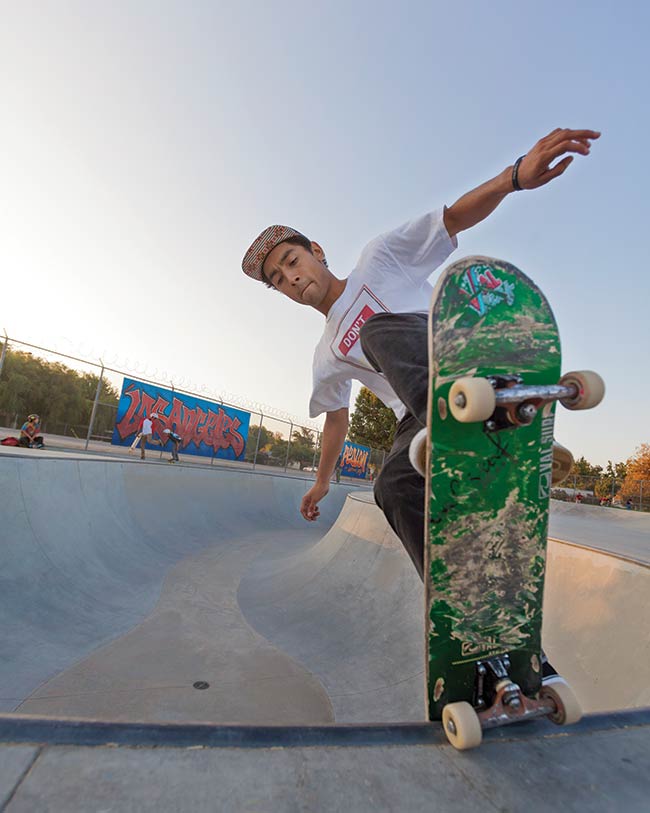
This burgeoning love for action sports in the Val- ley is part of the reason why the city of Los Angeles was pushed to build Pedlow Skate Park in Encino back in 2001.
Many of the pros who live nearby frequent the park to warm up for competitions, and local amateurs with aspirations of joining the national skate league use it to perfect their tricks.
“We call it the training grounds,” says Richard Koo, a rec assistant at Pedlow, about the skate park. “You know, if you’re going to go street skate, they come here to warm up before they head out.”
Pedlow boasts a concrete pool (which is often frequented by Dogtown skater Tony Alva), steps, rails and a concrete pyramid called a “fun box” for skaters to perform tricks over. On any given Saturday, the park is packed with skaters ranging in ages from 12 to 50—a reminder of the robust health of the local skate scene.
Though it’s not as recognized as some of the other more famous skate scenes in LA (like Santa Monica or Hermosa), the close-knit but vibrant Valley skate community is developing its own distinct boarding culture and has produced a steady number of pros. In addition to Paul Rodriguez, Jeron Wilson and Eric Grisham are natives.
The Underdogs
Skateboarding was born in the ‘50s and was started as a form of cross-training for surfers. If there was a flat spell and you wanted to practice your cutbacks or a bit of nose riding, all you had to do was grab a skateboard and carve up a few concrete banks.
While other skate scenes, like Dogtown in Santa Monica, began to depart from their surfing roots by the ‘70s—and thus gave rise to the rebellious, aggressive, street-style skating we know today—the Valley clung to its surfing past, creating a subculture of skaters distinctly less “radical” than some of their edgy brethren over the hill. Val Surf, a family-owned skate, surf and snowboard retail chain with three locations in the Valley, is a prime example of that local blend of surf and skate culture.
Bill Richards and his three sons, Mark, Kurt and Eric, opened their first location back in 1962. The boards offered at the time mimicked the classic Malibu longboards of the era, and the general demeanor of the shop and the skaters who frequented it adhered to surfing’s culture, clothes, lingo and casual attitude of the ‘60s.
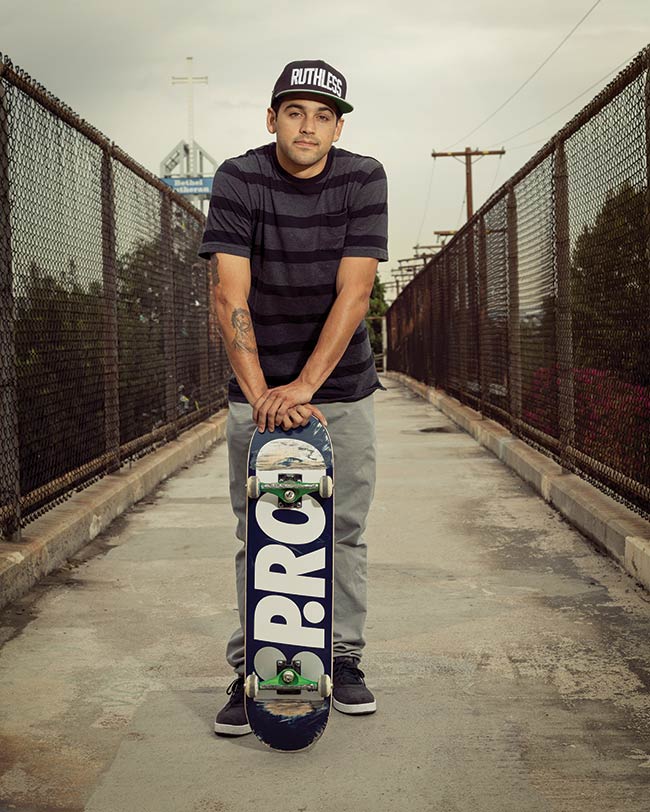
Vic Vasquez, the skate buyer for Val Surf, noted that even into the 1970s, when other LA skate scenes were delving headfirst into the rebellious attitude of street skating, Val Surf and the Valley still hung onto skate’s old-school surfing past. “ were known to be more of the rebellious type, whereas everyone in the suburbs, including Val Surf, they were known to be a little corny, and they just dressed a little goofier and had a little more of a surf vibe. The impact of the valley skater didn’t really hit until the ‘80s,” says Vic.
That’s when skating truly began to evolve into the adrenaline-fueled sport that it is today. In the mid-‘70s, skateboarders began to ride empty swimming pools in order to practice and perfect the first new-school aerial maneuvers. Over the next decade, skaters began to build steep homemade ramps to launch themselves even higher into the air.
Casey Morrissey, skate team manager for Val Surf, notes that Valley skaters proved to be quite adept at building these homemade devices. “That’s where a lot of backyard ramps—that was a really big thing in the ‘80s—popped up, and the Valley kinda got known for stuff like that. The Valley was always the underdog, and you had to find your own spots. But the valley has more of a tenacious vibe about it—kinda of a DIY ethic.”
In order to catch up with the more aggressive Westside skaters, Valley skaters had no choice but to adapt to and improvise on their surroundings. Unlike the coastal cities, the skate spots in the Valley were spread out over large distances, and skaters could either drive to a handful of select spots or construct their own backyard parks. The consistency provided by these homemade ramps allowed Valley skaters to advance their skills at breakneck speeds.
“We had kids in the ‘80s from Burbank and the Valley who were progressing at such a rapid pace that they set the standard for the street skater or the ‘vert’ skater that was now on the level with anyone else really—in LA or the rest of the country,“ says Vic.
By the dawn of the ‘90s, Valley skaters were coming into their own. They’d shed the surf culture of the ‘60s and had now fully embraced the street skate vibe of LA—thanks to our eclectic collection of backyard ramps and pools. “It took a while for the kids in the Valley to catch up with everyone else on the coast and LA city proper,” continues Vic, “but over the years, we’ve had our fair share of local kids that have turned pro.”
Just like Paul Rodriguez.
King of the Scene
Paul, who grew up in Northridge, got his hands on his first skateboard at the age of 16 and has been glued to one ever since. The 27-year-old X Games champion first came across the sport when he was in junior high, and he was utterly fascinated whenever he watched his classmates skate.
“I would just catch myself watching them for half an hour, an hour or whatever after school,” shares Paul. “Just being fascinated and not knowing how they could have the boards stuck to their feet—I was intrigued.”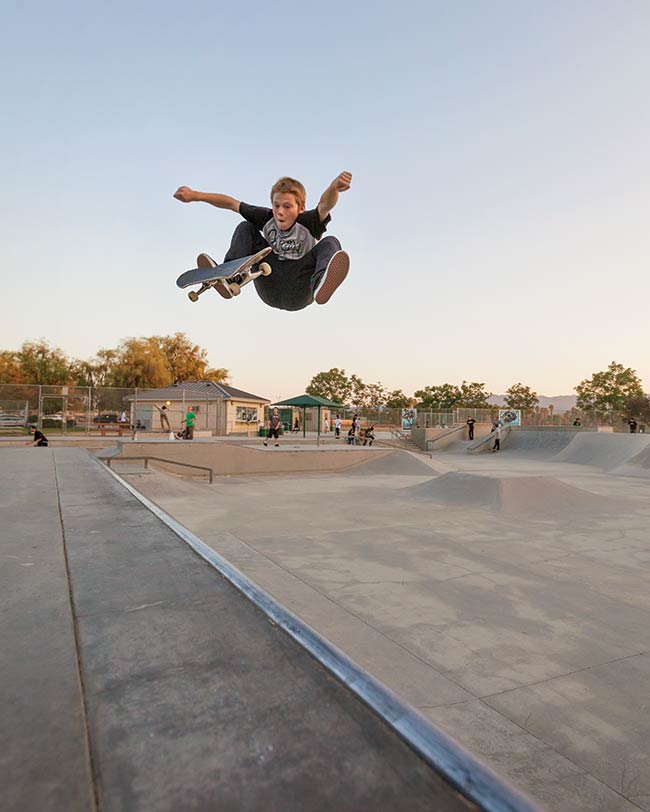
He spent a great deal of time at street spots like El Camino High School and Holmes Middle School, and after getting in touch with a number of local skate shops, including Valley Skate and Surf, he was able to climb his way up into the professional leagues. Paul notes that skateboarding is a distinct component of Valley culture—which is part of the reason he was able to advance his skills so quickly.
“What makes unique is that we’re really close to and part of the birth of skateboarding, you know? It was born in Los Angeles,” says Paul. “It wasn’t brought over to the Valley, it wasn’t, like, taken here. It was spawned out of Southern California. So we’re just part of the beginning.”
Paul points out that it only takes one person—that one notable local—to inspire others to pick up the sport and continually push its boundaries. Whether at sun-drenched Pedlow Park or along Boulevard sidewalks, no doubt there are countless future Paul Rodríguezes out there just waiting to happen.





